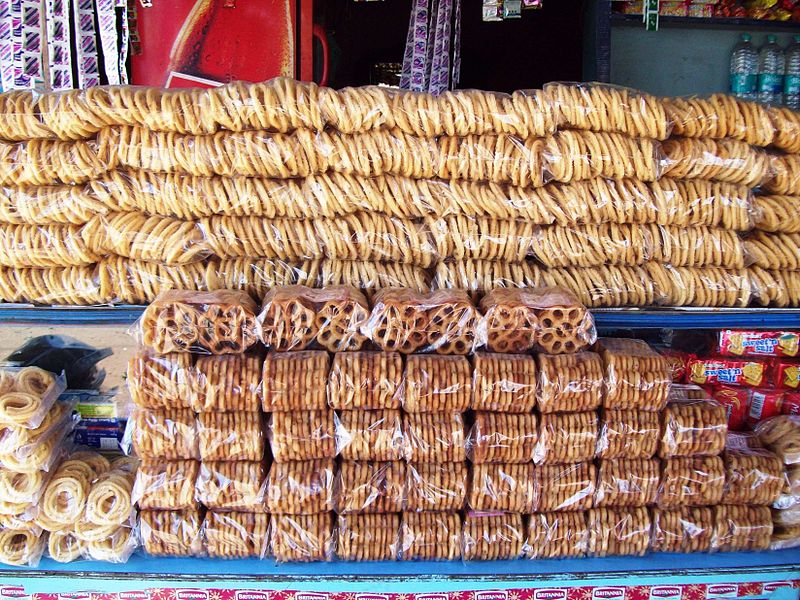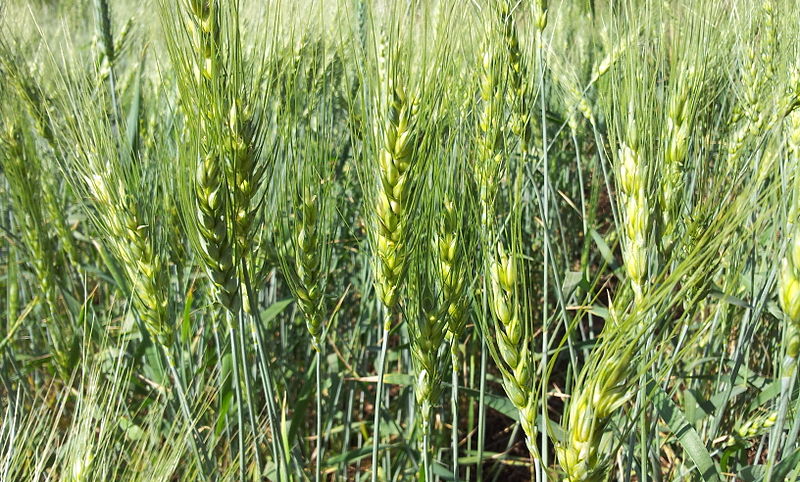In the immediate rescue-and-relief scenario following the devastation wrought by Uttarakhand floods, packaged foods may play a role in ensuring that people do not go hungry. However, every packaged food company wants its product to be considered ‘normal’ and everyday food, not just food for emergency. The food industry has managed to convert huge populations in Western and urban Indian areas to their ways, accepting packaged food as an ordinary everyday item. When these industries and the people they have converted are in charge of disaster aid, then there is a likelihood that the same packaged foods and nutri-powders that are heavily marketed on front pages and prime time television will be considered not only as emergency relief material but a part of ongoing rehabilitation assistance packages.
As Naomi Klein reports in Disaster Capitalism: How to Make Money out of Misery, “Where has all the money gone?’ ask desperate people from Baghdad to New Orleans, from Kabul to tsunami-struck Sri Lanka.” The answer, she explains, is to those who already had money.

Packaged snacks for sale. Pic: Wikimedia
Klein and other journalists had reported on this after Hurricane Katrina, Sandy, and other disasters in the United States. I have seen this happen after the earthquake in Gujarat and the tsunami in Tamil Nadu. Lakhs of rupees are budgeted for something like a feeding centre, but if spent on packaged food, those lakhs end up in the hands of Britannia, GlaxoSmithKline, Parle, and Nestle. What ends up in the people’s hands are biscuits and powders. What ends up in their lands is the packaging. The brands get recognition. The biscuits and powders boast nutrients on their labels but in reality offer little value compared to foods prepared locally from fresh ingredients. Though this may seem obvious, the relentless push of the food industry to make packaged food “normal,” and indeed preferable to homemade food, tends to extend its impact beyond the period of relief, into the phase of rehabilitation and eventually ends up influencing the normal diet of local population.
Commenting on the inappropriate use of the emergency food “Plumpy Nut” made by Nutriset, World Health Organization officer Zita Weise-Prinzo says, “Donors like seeing a product. They like being able to say they have distributed so many tonnes of this magic pill or whatever and it was distributed to so many thousands or millions of children.” (Sophie Arie, “Hungry for Profit,” BMJ 2010;341:c5221,)
Local Food Sovereignty
When we recognize the local food that people have traditionally grown and eaten in an area, we can look for ways to rebuild the supply through diverse channels, sustainable agricultural practices, and thus build local food sovereignty rather than bringing food and food-like substances from remote locations through centralized routes.
We must also guard against the role agribusiness plays in pushing government policy in their favour, as Biju Negi of Beej Bachao Andolan has written in “Deceptive Intervention for Millets.” He warns that government intervention will destroy traditional millet farming in the Himalayan region.
In the same state or district where a disaster has struck, there may be farmers who can supply food required for rehabilitation; if not immediately, then at least, after some time, especially if building their capacity is also made a part of the rehabilitation plan. It is important to link with and procure from these suppliers, sustaining local livelihoods as well as food traditions. This requires us, after the initial relief phase, to look beyond “feeding the disaster-affected” to approaching community rehabilitation in a holistic way, drawing on the strengths and resources of disaster-affected as well as non-affected people.
When I met the Koya tribal people who had been displaced from Chhattisgarh by the Salwa Judum, I saw that they carried with them their seeds of sama, korra and other varieties of millets and were growing them in whatever small space they could make in the forest, processing them at home and eating them. The relief package from the government as well as the local NGO, however, consisted of white rice, nutritionally inferior to millet. This was so, even though in the very same Khammam district, there were farmers growing the same grains that these people were used to eating. Why hadn’t the NGO bought those grains to use in the feeding centre?
Throughout India farmers and social organizations are fighting an uphill battle to sustain local grains. Yet these are neither included in the public distribution system (PDS) of the government nor distributed through the private suppliers who have the infrastructure to work with large donor agencies. In this case, the donor agency had stipulated that the food to be given should be procured through specified routes that conformed to their supply and billing systems. This meant that rice coming from some other part of the state or even other states could be used in the programme, but not the millets growing in the same district.
Even if the NGO had found a way to include diverse and local grains in the relief package, they would have been more expensive since they aren’t part of the public distribution system and don’t receive the subsidies that white rice does. The question is, can the donor agency recognize the value of the local food traditions, biodiversity, local economy and community health that are part of that grain, above and beyond its weight in kilograms? This calls for strengthening local distribution routes as well as local capacity, and commitment to existing Acts such as the Forest Rights Act and to the policy of land to the tiller, which would guard against further insecurity and in fact, would help people resist displacement in the first place.

Wheat crop in a field in Maharashtra. Pic: Akshay. P (via Wikimedia)
Global Economic Policy
Disaster capitalism goes beyond industrial food, Big Ag, Big Aid and Big Box to the heart of economic policy. As United States secretary of state, Hillary Clinton declared openly, the pillars of American foreign policy were development, defense and diplomacy and these would be used to ensure America’s (meaning corporate America's) access to global markets. Read, for example, Hillary Clinton on America’s Pacific Century.
Commenting on Naomi Klein’s book The Shock Doctrine: The Rise of Disaster Capitalism, economics professor and former World Bank economist Joseph Stiglitz writes about “the political machinations required to force unsavory economic policies on resisting countries (Stiglitz,“Bleakonomics,”New York Times, September 30, 2007). These policies include privatisation of natural resources including water and land (or as Luke Erikson puts it, “Land from the Tiller”), public utilities such as electricity, and even public services such as health, education, and transport. Though touted as the solution to poverty, these policies further deprive the poor, by defining development and progress in a way that discounts their own strengths and resources.
Consider the case of water. The Ministry of Water Resources’ draft water policy (2012) encourages the private sector and cuts agricultural and domestic subsidies, in line with World Bank recommendations. It states as a basic principle: “evolving an agricultural system which economizes on water use and maximizes value from water.” Unfortunately the history of water policy in India shows that maximizing value is not counted according to the numbers of people who have secured food and water, but rather the monetary value of that water and the goods it is used to produce. This serves the needs of the food (and beverage) industry.
The hundreds of dams that are part of the drive to privatize have also aggravated the present floods in Uttarakhand that have claimed thousands of lives and rendered more than one lakh people homeless over the past week. India Climate Justice has called for a halt to construction of dams in the Himalayas pending review, and has noted that the Comptroller and Auditor General warned that this series of dams and hydropower projects could be environmentally damaging. Himanshu Upadhyay has detailed the failure to heed these and other crucial CAG warnings in his article for India Together, Uttarakhand: Ignoring the writing on the wall. Apart from the potential to aggravate floods, the series of dams diverts water to power houses and away from traditional irrigation systems, serving small local farms.
Everyday Disaster
In situations of chronic hunger, the food industry need not wait for any specific disaster to strike before bidding to introduce their products. Since hunger is chronic, the contracts will be long-term. Consider this ominous title of a UNDP Report: The Roles and Opportunities for the Private Sector in Africa’s Agro-Food Industry. The author of the report is “UNDP Africa Facility for Inclusive Markets.” Its stated focus, ”development and expansion of regional value chains in job creating sectors such as agribusiness...” itself works against the goal of local food sovereignty and in favour of privatization and globalization.
Industrially packaged food that enters as an emergency measure must not come to be regarded as the new normal. Those involved in supporting rehabilitation programmes should take care to guard against the push of this industry to reach new consumers, particularly in vulnerable times, which moves more people away from the local, diverse, whole and home-made food that is the foundation of health, livelihood, community and food security.
























